Flying Ants: A Complete Guide to Preventing and Getting Rid of Them
Content
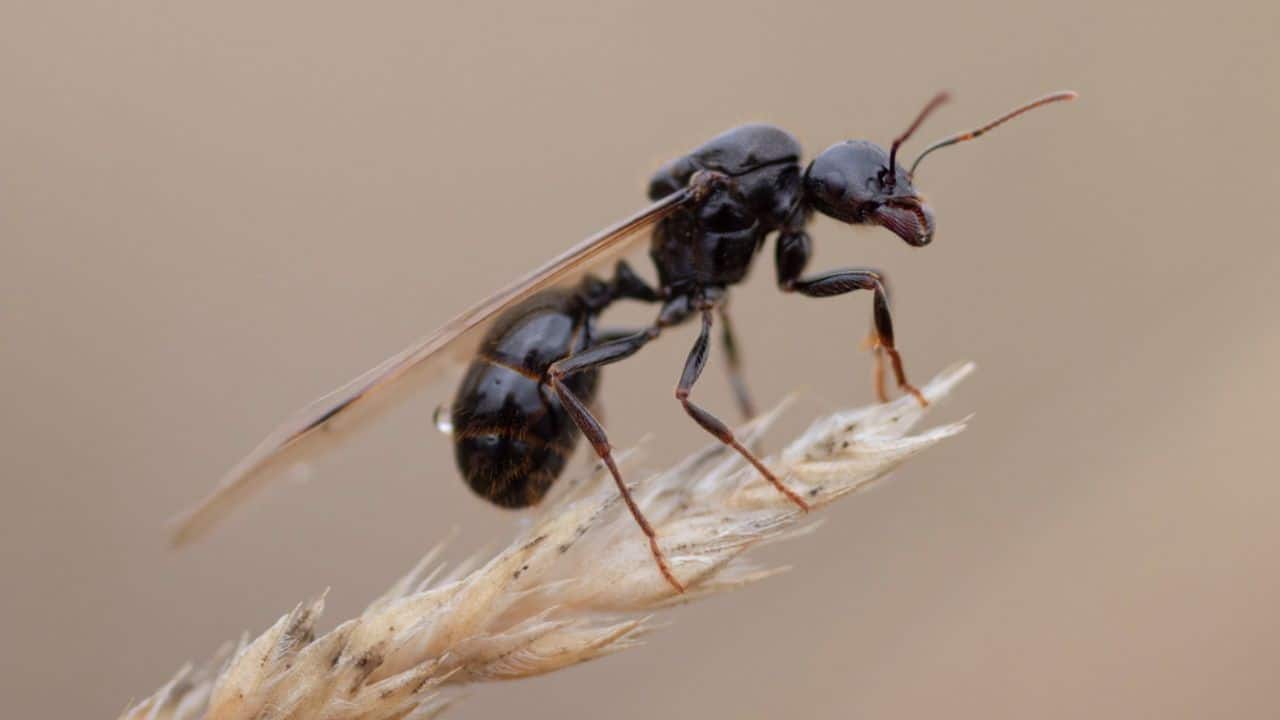
The term "flying ant" may seem like an oxymoron, but these ants are also known as swarming or winged ants and are usually seen at certain times of the year, mainly in the spring and summer.
As part of the reproductive cycle, both female and male ants that have just reached sexual maturity develop wings, allowing them to fly away from their colonies in hopes of finding new partners and starting new colonies.
Therefore, if you notice flying ants at home, most likely it is already an ant colony and has already established itself.
Different species of ants have different flying ant characteristics. If you notice a large number of flying ants in your garden, it is helpful to observe their appearance, coloring and behavior to identify the species and determine the best pest control method.
Outdoors in the garden this may not be such a big problem, but seeing flocks inside the house is never a good sign. Having these winged ants in your home during the winter is especially problematic because they only develop wings when they are old enough to reproduce.
If flying ants have become a nuisance in your garden, there are several preventive measures and control methods you can use. Read on to learn how to get rid of these problematic ants at home.

What are Flying Ants?
Flying ants are reproductive ants that belong to different ant species. During the mating season, usually in the summer, male and female winged ants make what is called a mating flight. This mid-air mating ritual allows them to mate and create new colonies.
Like people, ants come in different shapes and sizes and serve different purposes in a colony. Inside the colony you can find queens, workers, gatherers and swarmers. Swarmers serve as winged ants in the colony. All species of ants (such as carpenter ants and moisture ants) have swarmers in their colonies.
Although it may not seem obvious, ants are related to wasps. Both belong to the order Hymenoptera (Greek for membranous wing), and when the adult ants grow wings, they closely resemble their wasp cousins.
Ants are divided into strict groups, each of which performs its own role. Regular worker ants are sterile females and do not grow wings. Instead, flying ants are created by the queen of an ant colony, which lays special eggs that develop into winged ants; these ants remain in the colony until they eventually emerge.
While their sudden presence can sometimes be overwhelming, it is important to recognize their importance to the natural balance of your garden.
The presence of flying ants in your garden indicates the presence of an ant colony nearby. However, rather than viewing them as a problem that needs to be eliminated, it is important to consider the environmental benefits of flying ants.
Ants, including flying ones, play a critical role in soil aeration and nutrient cycling, improving the overall health of your garden. They also act as natural predators, feeding on pests such as aphids, caterpillars and flies, helping to control their populations.
The desire to control their presence is understandable, but I encourage you to prioritize sustainable and organic methods. Focus on preventative measures such as good garden hygiene, removing potential food sources and creating natural barriers.
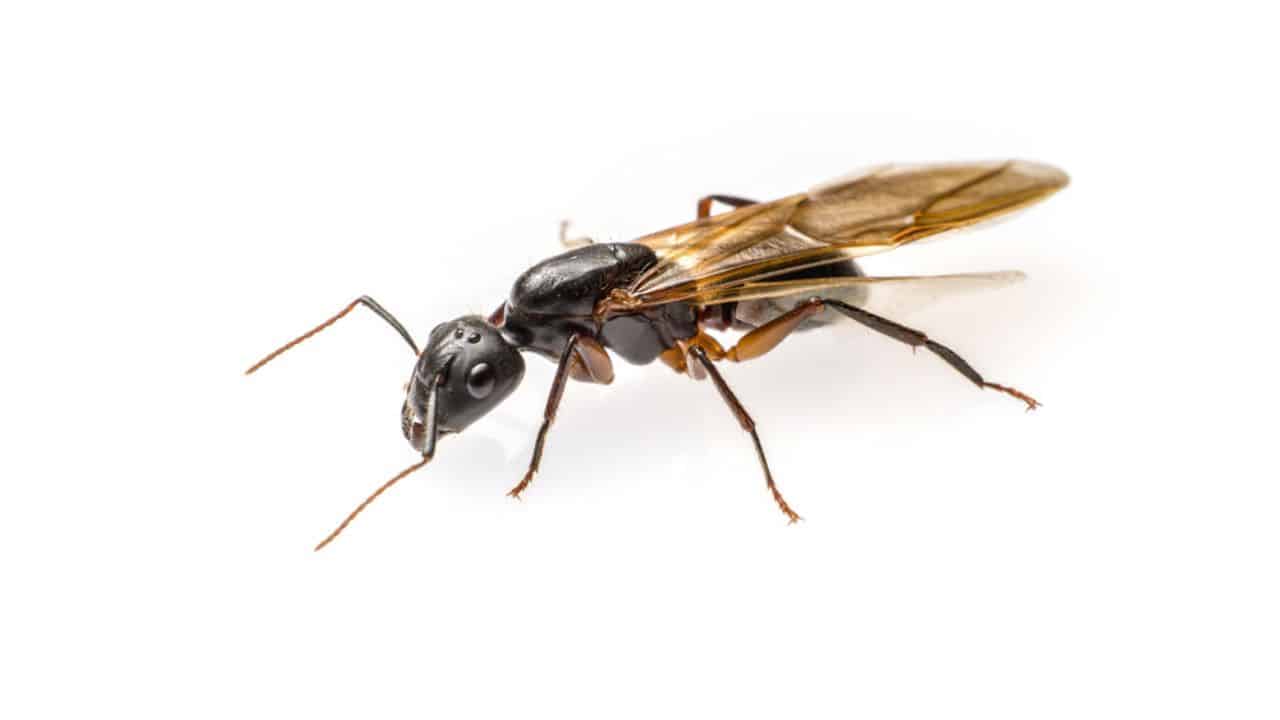
Why do these ants fly?
The reason these ants fly is to reproduce. Normal workers in an ant colony are usually sterile, and only the queen can reproduce. However, flying ants can also reproduce; unlike most, they can be male or female.
When these ants swarm, it is called a nuptial flight; Female ants fly as high and fast as they can, while male ants chase them. The mating flight ensures that only the fittest and strongest ants reach the females and mate. Ant swarms mate in the air and the males soon die. Meanwhile, the female ants fly off to establish their own nests and become queens.
When female ants make a new nest, they shed their wings. To raise their first offspring, they will absorb the muscles that powered their wings until their offspring are old enough to feed them. On the backs of larger ants you can still see the scars where the queen's wings used to be.
Flying ant day occurs when there are ideal conditions for mating flight, so all nearby ant colonies congregate on the same day.
A recent study found that swarming is caused by weather, and that ants only fly on days when it was warm and clear and conditions had improved from the previous day. This may cause countless ants to fly around and cause trouble for themselves.
Why do flying ants swarm?
Swarming of flying ants indicates that the colony is maturing and has not been seen recently.
Flying ant swarms are the mating process of these insects in which virgin queens and reproductive males from different colonies of the same species collide and reproduce while flying in the air.
In the insect world, swarms of insects such as termites, some species of bees, and flying ants are called nuptial flights and are an important phase of the insects' reproductive cycle.
Swarms of flying ants occur in large numbers to ensure the survival and reproduction of the species during warm seasons, such as summer; It is believed that swarms of flying ants occur in the summer (and sometimes in the spring) due to humidity, temperature and wind conditions that are ideal for them.
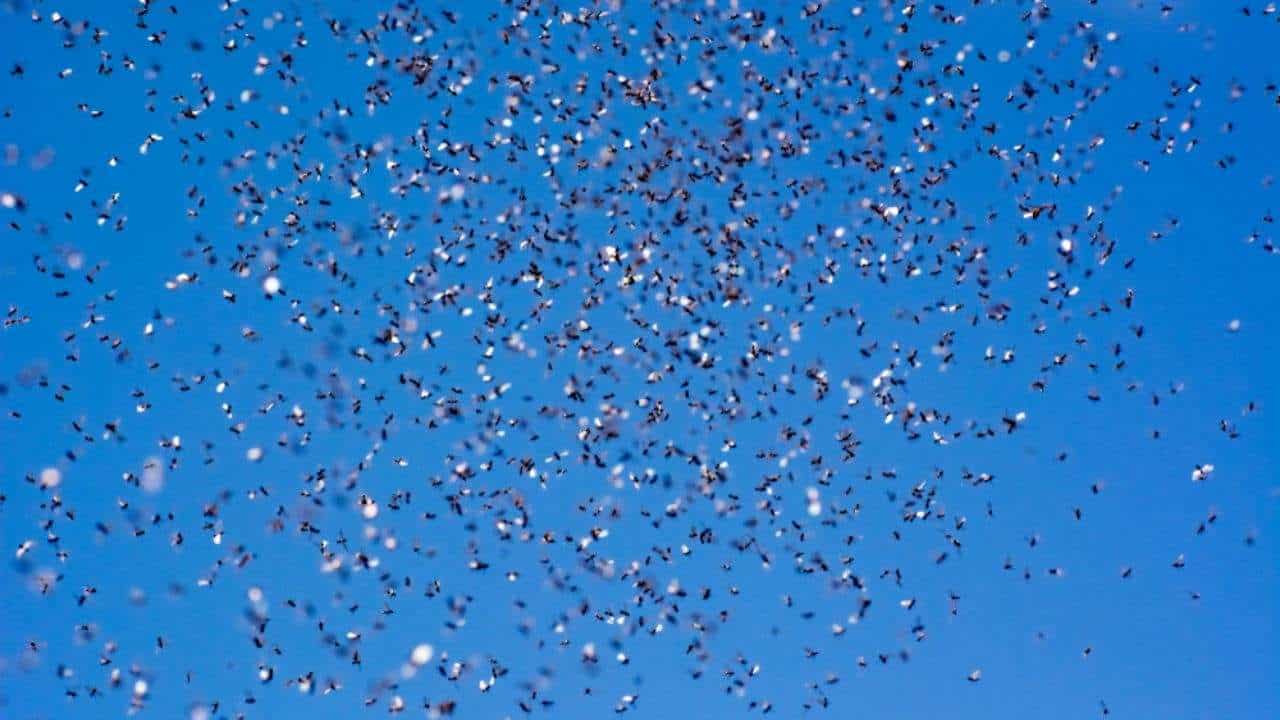
Why do flying ants suddenly appear?
If you notice a sudden influx of flying ants in your garden or home, this may indicate the presence of an established ant colony nearby.
The proximity of their nests affects the number of flying ants you will encounter. These colonies can exist in different places, such as in the ground, in trees, or inside building structures.
The sudden appearance of flying ants is often associated with their mating season, which usually occurs during the summer months. At this time, male and female ants from the formed colonies rise into the air, making the so-called mating flight.
This behavior is caused by environmental factors such as temperature, humidity and daylight hours. Warm and humid conditions are especially favorable for their mating flight. The combination of high humidity, low winds and optimal temperatures causes swarming behavior in flying ants.
Flying ants are also attracted to light sources, especially during mating season. Artificial lighting or bright indoor lighting can attract them to your home. This is why you may notice an increase in the number of ants flying around windows, doors or street lights.
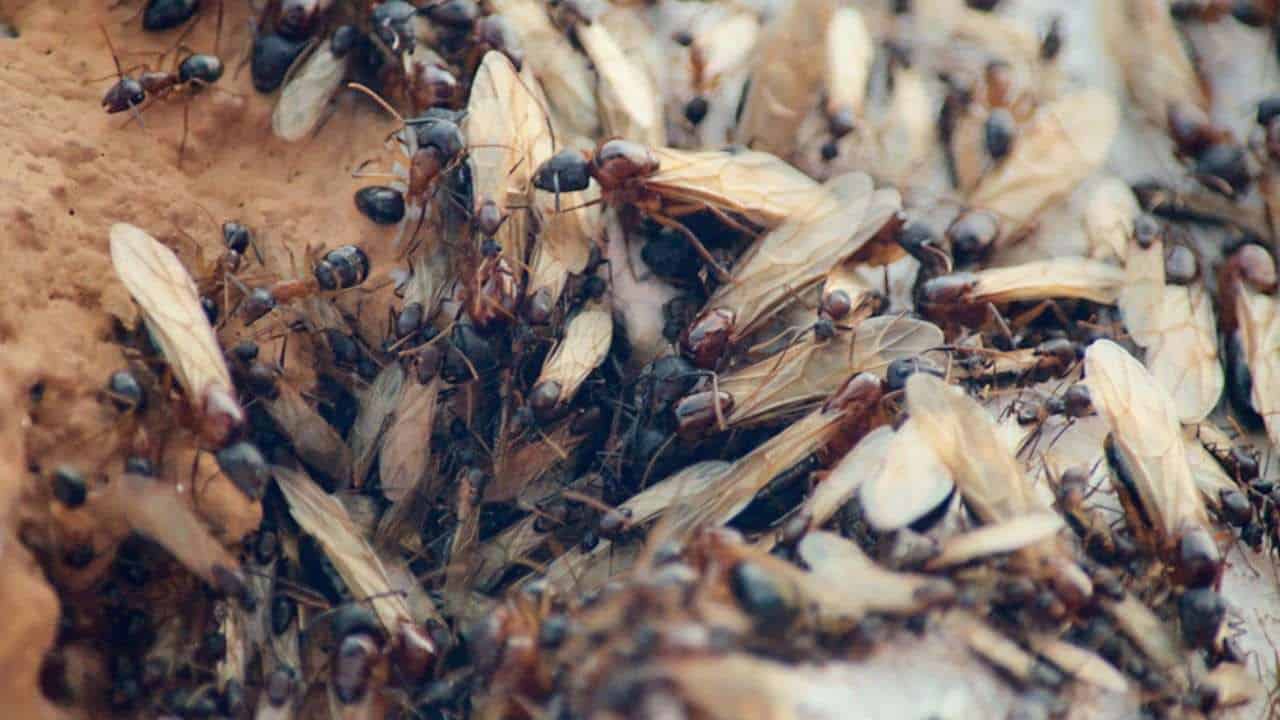
Flying ants against termites
Flying ants and termites have some similarities in their appearance, behavior and even the time of year when they are most often seen. However, there are differences between them. Let's take a closer look at them:
ФормР° РєСѓР · РѕРІР °
Although both flying ants and termites have wings, their body shapes are different. Flying ants have a tapered waist and a clearly segmented body. In contrast, termites have a more uniform, straight body without a defined waist. Their bodies are often cylindrical or rectangular in shape.
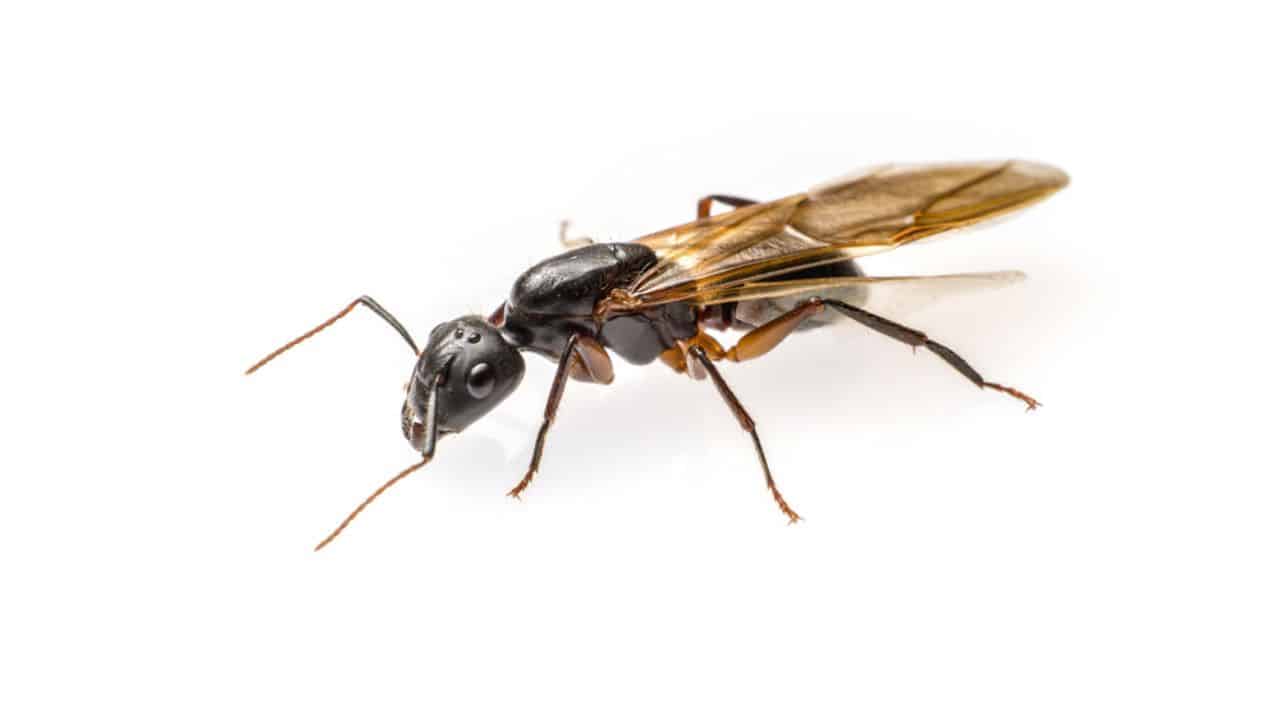

Antenna shape
Ants have ulnar or curved antennae with distinct articulation between segments. Termites, on the other hand, have straight antennae with no noticeable joints or bends.
Wing length and appearance
The wings of flying ants are usually longer than their body and extend beyond the abdomen. Their fore and hind wings vary in size and shape, with the hind wings being smaller. Termites usually have wings of equal length and a more uniform shape.
Habitat and diet
Flying ants are usually found outdoors and are associated with nearby ant colonies. They build nests in the soil and their diet includes plant materials, other insects and nectar.
Termites, on the other hand, are often found in damp or rotting wood and feed on the cellulose found in wood and other plant materials. If left unchecked, they can cause significant damage to wooden structures.
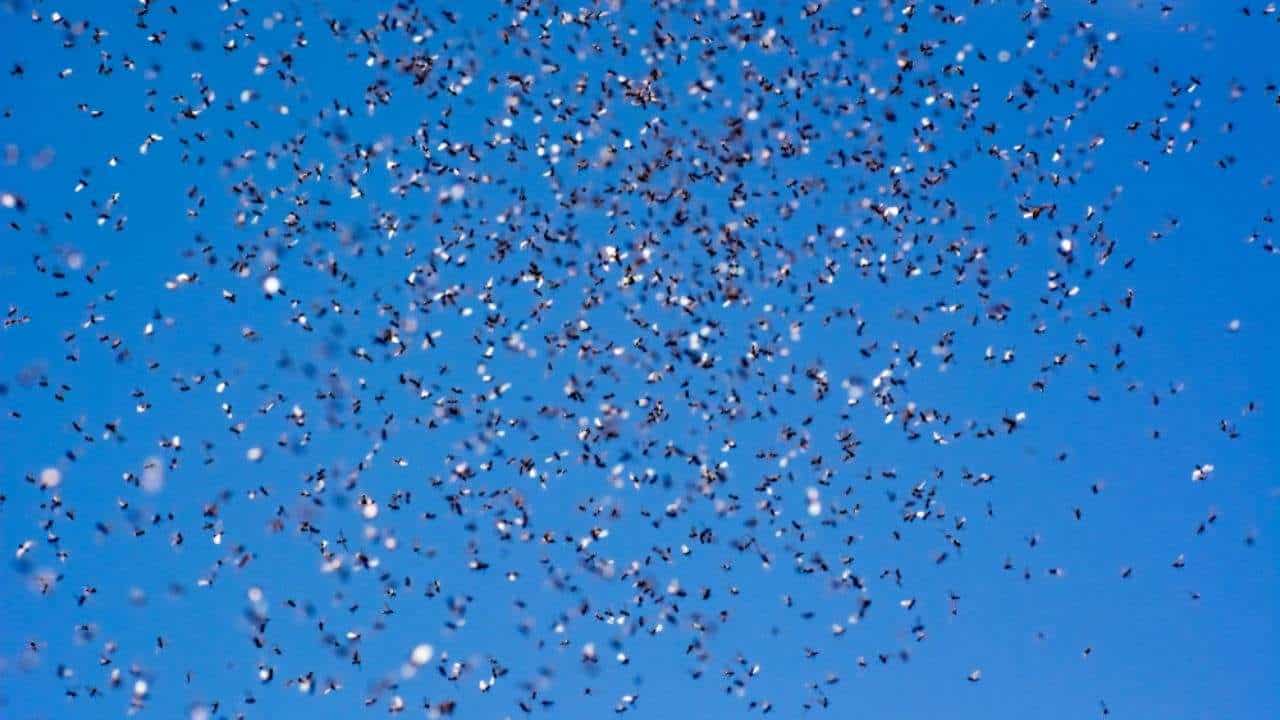
How to Prevent Flying Ants Inside Your Home
Flying ants often enter homes through open doors and windows. Depending on the species, they can pose a serious threat to your property.
Carpenter ants, for example, get their name from the damage they cause to wooden structures by nesting inside pieces of unpainted and untreated wood.
Seal entry points
Flying carpenter ants easily enter your home through open doors and windows, as well as through cracks in walls and roofs. So, inspect your home for any cracks, crevices, or holes that could serve as an entry point for flying ants. Seal these areas with caulk or sealant to create a physical barrier and prevent access.
Store food properly
Flying ants are attracted to food sources. Make sure all food is stored securely in airtight containers, especially sugary or sugary foods that ants particularly enjoy. Wipe down countertops and clean up any spills immediately to eliminate potential food sources.
Keep your home clean
Clean your home regularly, paying special attention to areas where food particles can accumulate, such as the kitchen and dining room. Regular vacuuming and sweeping will help remove traces of ants and prevent their presence.
Use Natural Deterrents
Some natural substances repel flying ants. Lemon or orange peels, cinnamon sticks or cloves can be conveniently placed near entry points or areas where you notice ant activity. The strong scent of these natural repellents can deter ants from entering your home further.
Try essential oils
Ants do not like the smell of some essential oils. Dilute peppermint, clove or citrus oil (such as lemon or orange oil) with water and spray it on the areas where you want to repel flying ants. Repeat this process regularly to maintain effectiveness.
Remove standing water
Flying ants are attracted to sources of moisture. Fix any leaks or areas where water accumulates, such as around sinks, faucets or pipes. Ensure proper drainage in your home to minimize wet areas that may attract ants.
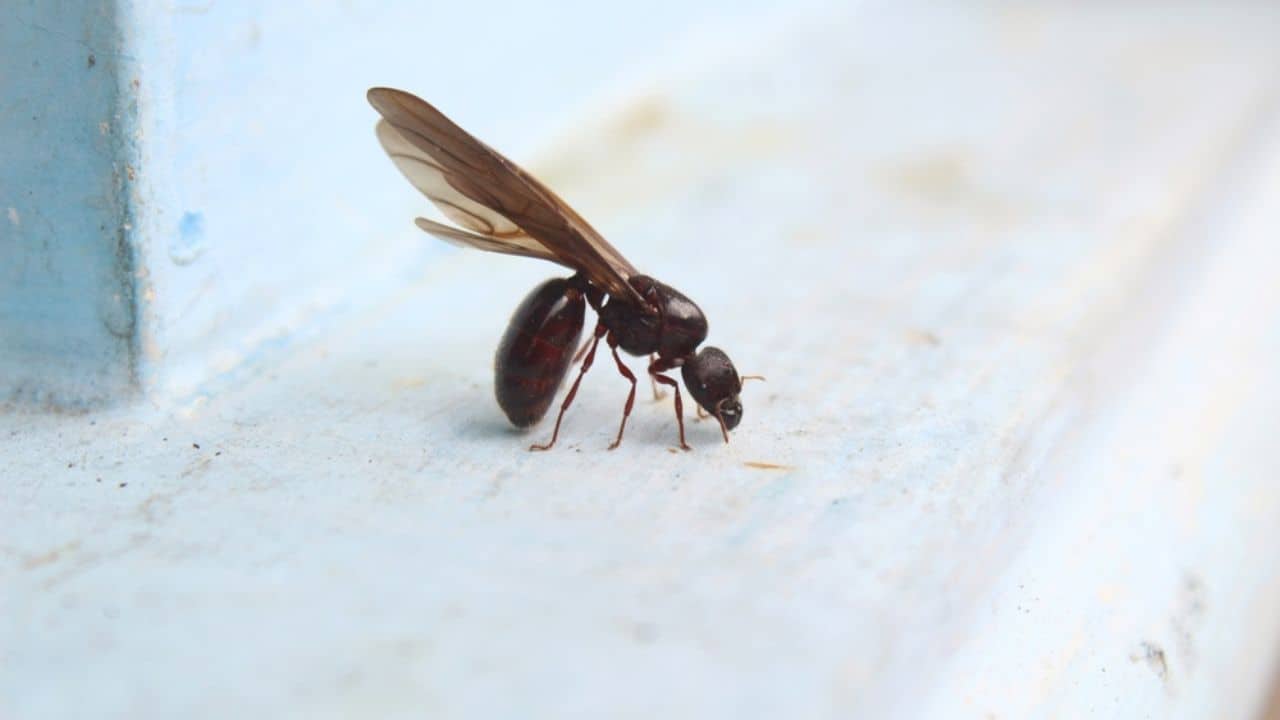
How to effectively get rid of flying ants
Step 1: Identify the Insects
This task can be difficult because ants are often confused with termites. But there are a few key differences. In addition to large front wings, flying ants may have small hind wings, a thin waist concave in the thorax, and curved antennae, with female winged ants appearing significantly larger than males. The bodies of flying ants can be brown, black or red.
Step 2: Find a Colony
To get rid of an ant colony, you need to find it first. You can find it by following the trail of ants to their place of origin; this will be obvious when you discover a colony as it is a huge swarm of countless flying ants. Try to get rid of the colony as soon as you notice it. The most effective way to do this is to use boiling water, pour it into the hole at the top of the colony and repeat until all the ants are dead.
Step 3: Seal the Walls
These pests tend to enter homes and premises through cracks in the walls, so you should seal them to reduce the chance of flying insects returning. You can seal any cracks in a wall, window, floor or baseboard using caulk and a caulk gun.
Step 4: Vacuum Them
If you have visible swarms in your home, the easiest way to remove them is with a vacuum cleaner. Vacuum any insects you find around the house and replace the vacuum bag immediately after you're done.
Step 5: Use Peppermint Oil
The scent of peppermint is reminiscent of predators and acts as a natural ant repellent. You can kill these flying insects by mixing ⅓ liquid dish soap, ⅔ water in a spray bottle and 5-10 drops of peppermint oil into a mixture.
Shake well and then spray any ants you encounter. Soap dehydrates insects, but peppermint oil suffocates them.
If you don't have peppermint oil on hand, you can use other essential oils that also have repellent properties. You can use clove, tea tree, cinnamon, patchouli and cedarwood oils.
Step 6: Encourage Beneficial Insects
Introduce beneficial insects such as predatory ants, ladybugs or lacewings into your garden. These natural predators feed on ants and can help control their populations without the need for chemical intervention.
Step 7: Try Fly Traps
Sticky traps, also known as sticky fly traps, are another effective tool for killing flying ants. You can find these traps at your local hardware store and place them throughout your home (always following the instructions on the package), paying special attention to areas where you notice a cluster of ants. Flying ants will fly right into them and get stuck in the glue.
You can make your own flying trap by placing strips of duct tape around your house, sticky side up, and sprinkling a little honey or sugar on them to attract them.
Step 8: Use Pesticides
Use a commercial pesticide instead if you don't want to create an insect repellent. Pesticide sprays will kill any visible flying (and non-flying) ants, but you will still have to do some work to deal with the ant infestation itself (see below). Be careful when spraying pesticides indoors.
Step 9: Spray Your Home
As an added measure of protection, you can spray your home with repellent from time to time. Boric acid is a great option; Mix a tablespoon of boric acid powder and a glass of water in a spray bottle. Shake well and spray the areas where you have previously noticed swarms of flying ants.
Step 10: Contact a Pest Control Professional
The most effective solution against flying ants and other pests is to hire a professional pest control company to identify and treat any insect problem. Flying ants are the definition of starting a new colony. Getting rid of these insects will limit future infestation problems and eradicate existing ones.
Other pest guides from BezTarakanov:
Sugar Ants Explained (with Photos) + DIY Removal Instructions
How to Get Rid of Fire Ants (Red Imported Fire Ant Control Method)
Previous